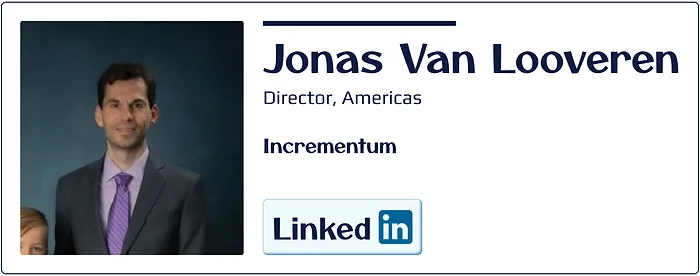We were the ones providing them with the tool to help them out getting the work done more easily. With our suppliers, we can more easily communicate and have valid claims. Towards our customers, the same applies: increased quality and overall communication because we’re using it on inbound as well as outbound. We easily collect pictures on the outbound that can do the same as what we do on inbound with the reports. So, it sounds like your relationships with your suppliers have improved quite a bit. Absolutely, a lot of business is about people. There will always be hiccups along the way and discrepancies to clear out. Having a tool that shows there’s a system in place increases not only the perception but also the reality of the quality of our work. It helps people trust us as a partner to see that we’re using tools like yours instead of pictures in emails or smartphones. This transparency and credibility improve relationships with suppliers.
How is life before Load Proof, and how is it now? My life before was short-lived with Vasper, as I just started on board. But I could see that in larger operations, you need tools and structures in place. If you don’t have that, today might be good, but tomorrow could be bad if someone skips a step. Consistency in processes and quality of work is very important for smooth operations. Before Load Proof, there was more chaos and less structure. If there was a need to pull pictures from the past, it required a significant amount of work. With Load Proof, daily tasks are easier and faster. There’s less labor spent managing photos and data, and it’s much easier to pull up loads by number. We often have a month to two months between loading and the receipt by the end customer, so when questions arise, the customer can easily reference an order number and access all pictures in Load Proof.
This involves shipping material overseas, which is why it takes that long. We have incoming and outgoing materials within the US, but a significant portion of our business is shipping to Asia, Africa, and Europe. Even if there’s not a claim, there’s a delay. When customers receive our products, it’s a month to two months down the road. Being able to pull it up in Load Proof within seconds is invaluable. I can be on the phone with a customer while they mention a load, and I can quickly have the pictures pulled up and identify what load we’re discussing.
How difficult was it to implement Load Proof? From a technical perspective, turning on a system is one thing. From a people perspective, getting users to embrace the system can be challenging. Humans are resistant to change and used to their ways of doing things. It was important to work through change management and address users’ questions.
Could you please talk from a technical system rollout perspective as well as from a people adoption perspective?
Yeah, um, I briefly touched on that in the beginning without knowing your question was coming up. The setup was, um, I’d say on one it was looking at, well, initially, there’s just the setting it up for pictures and using it for pictures, which is, I’d say, plug and play, right? It’s got the basic fields of the load, and I can’t remember, maybe pallet or packaging type, got a couple of standard fields correct.
The initial testing and getting going is basically downloading the app. Yep, at that, I’m getting the test user, and I was out there using it, right? From there, I took probably a couple of hours figuring out what process we wanted, adding in myself the fields in Load Proof, um, that we wanted with the selection menu, the drop-down menu.
So, it’s I’d say there for somebody with a basic knowledge of, say, an application like Excel, yeah, if you can do the basic things in Excel, you can figure this out. You can set up Load Proof and actually make it look good. It’s funny because I was out at the warehouse making changes as we went. The people I was working with were in one of our first encounters as I had recently joined the team. They were kind of like, oh wow, all this knowledge you have. I said, don’t worry about it, look, it’s an easy application.
I just have to select this, do this or that; I’m not programming or anything, you know? So the setup was very easy to even make it custom to our needs and try to get the most out of it of how we would use it. And then the rollout with the team, like I said, I think it was a one-pager, step one, two, three.
But even there, you open up the application; nowadays, everybody kind of knows their way around with a smartphone, exactly. So it’s really step by step; it’s very, I’d say, intuitive to go from one step through the next. The picture-taking is very much like taking pictures on their phone. All in all, I probably really took 50 minutes to explain to the guys in the warehouse, and that was it.
I think ever since, there might have been rare occasions where, um, I think the maybe two or three follow-ups with the warehouse team that I’ve had was for the admin person to know how to upload a picture, um, once the load had been uploaded, to change some information on the data fields, and that was about it. But even then, it was two, three screen captures in the email, yeah, there you go, and then it worked. They’re using it; they are pretty fluent from that point.
Absolutely great. So just very, very high level, right? Approximately, how much are the dollar savings that you guys have had? I mean, it sounds like, from your perspective, it sounds more like it’s, uh, I think two things. One is obviously labor, right? Having a clean process, clean system that’s enabling people to do all these steps. So that’s one: labor. The second one is that difference in the classification in terms of what you guys see versus your suppliers, right? That’s what it sounds like. Those are the key contributors for these dollars.
Just very, very high level, approximately, how much is the dollar savings? I think on the labor, as we’re so, we were working with a fairly small team. In the warehouse, I think there are probably going to be two or three people out in the warehouse that use the same app, one in the office. I think on that end, we’re not maximizing, or we don’t have the scale to really run into the tens of thousands a month.
So in our case, it’s probably going to be a couple of hundreds, but of course, it’s also against a smaller scale of overall cost. So we’re definitely a couple of hundreds there. I think on our end, the biggest win is more of the opportunity cost, so to speak, of being able to stay away from claims, and if there are claims, to solve them quickly. If I put a number on that one at one particular supplier that I have in mind, we’re probably talking about between 100,000 and 150,000 dollars a month of material purchases.
So there’s going to be some claims; think about claims there, it’s a couple of thousands a month. Like I said, they’re more of opportunity cost. If all goes well, then there’s no money to be gained, right? The gain is we have no issues. In case of claims, then it’s about less friction and being able to save a couple of thousand.
It makes sense. I mean, you know, when you guys have a great working relationship with your suppliers, that makes life so much better, right? You’re not sitting there constantly fighting over this or fighting over that. You’re able to focus on, hey, how can I help you build my business? I know how can you, you know, help build your business, and how we can work together and increase the volume. More win-wins for both of us rather than sitting there and fighting over claims, right? That makes a big difference.
Awesome. So would you recommend someone in your role to use Load Proof? Yeah, absolutely. I’ve actually, um, early on, I reached out to two people in the previous company that had been involved with trying something out in the past. I basically reached out and told them, look, I’m rolling it out with the new company; so far, it’s doing everything that we thought it would be doing.
So if you ever need support in getting it, um, kind of trying to go for another round to get it going in the other company, let me know. Great, that never came from it, but no, absolutely like it a lot. Awesome. Thank you for taking the time, Jonas; this means a lot. This helps us a lot.
Is there anything that you would like us to improve or any feedback that maybe you can tweak this or you can add this capability, enhance this and things like that that we can do for you to make Load Proof even better for you guys, or any other use cases that we can support for you? I think in our situation, we really have everything that we need.
I think there’s been maybe two times where I had to reach out for some technical support on the user matter or anything that was done basically within the day or so. So the technical support was definitely there as well. On our end, in our situation, especially if I compare to previous operations I was involved with, we’re a small scale operation, correct? Fairly basic material flow.
So we’re really getting everything that we need with the basics of the tool. I can definitely see if you’re running a little bit more complex operations that Load Proof can be a great tool to build upon and to try to get more checks of whatever you’re doing next to the system to get it into the system.
Okay, perfect. Thank you very much. Thank you for taking the time; this helps us a lot. That’s all I have; thank you for the time, Jonas. Yeah, absolutely, my pleasure. Thank you.
Bye, see you. Bye-bye.







 1. Increases EPP, using budgeted line items.
1. Increases EPP, using budgeted line items. Millennial friendly technology, less onboarding time, very easy adoption – touch screen keypad, and 43% of Millennials already use IOS, familiar with Facetime, 85% of Millennials aged 18-24 own devices and 86% aged 25-34 own them, consume a lot of video on their smartphones, and are highly comfortable with this medium, they understand and like apps.
Millennial friendly technology, less onboarding time, very easy adoption – touch screen keypad, and 43% of Millennials already use IOS, familiar with Facetime, 85% of Millennials aged 18-24 own devices and 86% aged 25-34 own them, consume a lot of video on their smartphones, and are highly comfortable with this medium, they understand and like apps.